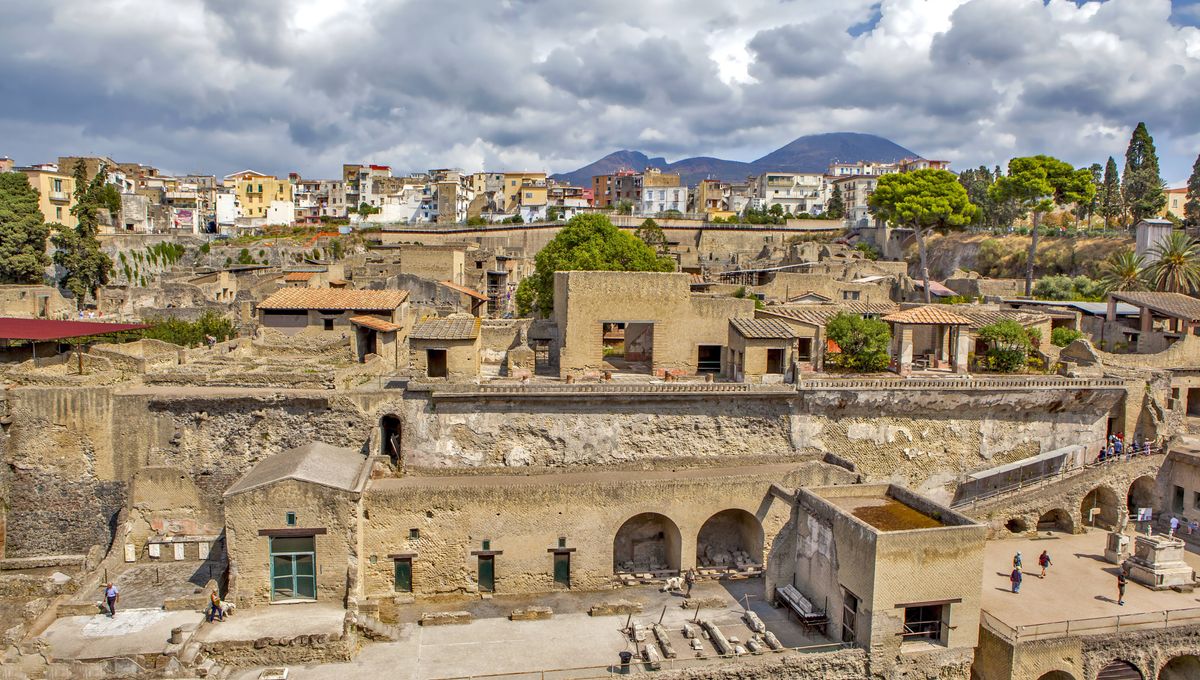
Fancy yourself a code breaker or a technological wiz? If so, you could win $700,000 if you can solve a 2,000-year-old mystery. The former GitHub CEO Nat Friedman and a group of scientists are giving away prizes worth a total of $1,000,000, at the time of writing, to anyone who can successfully decipher scrolls recovered from a library in Herculaneum, which was buried when Mount Vesuvius erupted in 79 CE.
The object of the Vesuvius Challenge is to “make history” by reading an unread scroll from Herculaneum. The first team to read four passages from the text will win the Grand Prize of $700k, while a Progress Prize worth $50k – with more on the way soon – is available to encourage contestants to solve important subproblems and to release their work.
Textual evidence is crucial for our understanding of the classical world, especially for the ancient Greeks and Romans. Although we have various sources of information – from archaeological evidence and later commentators – it is through contemporary textual documents such as papyrus scrolls, that we are able to learn the most details. These treasures are invaluable as so few have survived the centuries, which means our existing knowledge is based on a tiny percentage of sources copied by medieval scholars. The scrolls once held by the Villa of Papyri at Herculaneum could well change this.
The Villa was discovered in 1750 by an excavation team. It not only contained the largest collection of classical sculptures ever discovered in a single building, but also had the only library to survive (with 1,000 scrolls) from the Graeco-Roman world. The Villa of Papyri is thought to have been built between 40 and 20 BCE, and may have belonged to a wealthy Roman statesman, maybe Lucius Calpurnius Piso Caesoninus – the father-in-law of Julius Caesar. Unfortunately, when Vesuvius erupted, the Villa, along with the rest of Herculaneum and nearby Pompeii were engulfed in volcanic rock, ash, and gas.
Now the Vesuvius Challenge team hope spur innovation in technologies to read these long-obscured texts recovered from the Villa. Participating individuals or teams can obtain 3D X-ray scans of the top halves of two intact Herculaneum scrolls, as well as scans and images of three papyri taken from the site. The scrolls are owned by the Institut de France and have been scanned at about 8-micrometer resolution at the Diamond Light Source particle accelerator in Oxfordshire, UK. The images of the offer a top-down view of the scrolls and look like this:
The challenge is open to anyone across the world, and entrants will have the rest of 2023 to examine and extract the text from these ancient scrolls. Any method is acceptable, and can involve anything from machine learning to computer vision or machine-assisted tools operated by humans – as long as you can provide a detailed description of how the solution works so that it can be replicated by the challenge organizers. If the chosen approach works, the Vesuvius Challenge team will grant access to the rest of the artifacts that are being withheld, for now.
Techniques to unwrap and read scrolls have already been developed, but they are limited. In 2015, a team of researchers led by Brent Seales from the University of Kentucky used artificial intelligence to unwrap and read the En-Gedi scroll, a 1,500-year-old text found on the western shore of the Dead Sea. Although Seales, who is part of the Vesuvius Challenge team, and his colleagues have applied this technique to the Herculaneum scrolls, they have not been able to reveal the whole story.
Speaking to the Guardian, Seales noted, “We’ve shown how to read the ink of Herculaneum. That gives us the opportunity to reveal 50, 70, maybe 80% of the entire collection.” He added, “We’ve built the boat. Now we want everybody to get on and sail it with us.”
As the scrolls are so charred, the ink originally written onto them cannot be seen with the naked eye. But infrared images of surface fragments can reveal the letters and symbols hidden under the damage. Using this information and X-ray images of the same fragments, Seales and his team taught their algorithm to read the lettering from the X-rays, allowing it to spot new text in hidden layers of scroll.
“A human cannot pick this out with their eye,” Seales added. “The ink fills in the gaps that otherwise create a waffle-like pattern of the papyrus fibres. That pattern gets coated and filled in and I think that subtle change is what’s being learned.”
The deadline for the Vesuvius Challenge is 11:29 pm (PST), December 31st, 2023.
Source Link: Vesuvius Challenge – Decipher These 2,000-Year-Old Scrolls And Win $1 Million